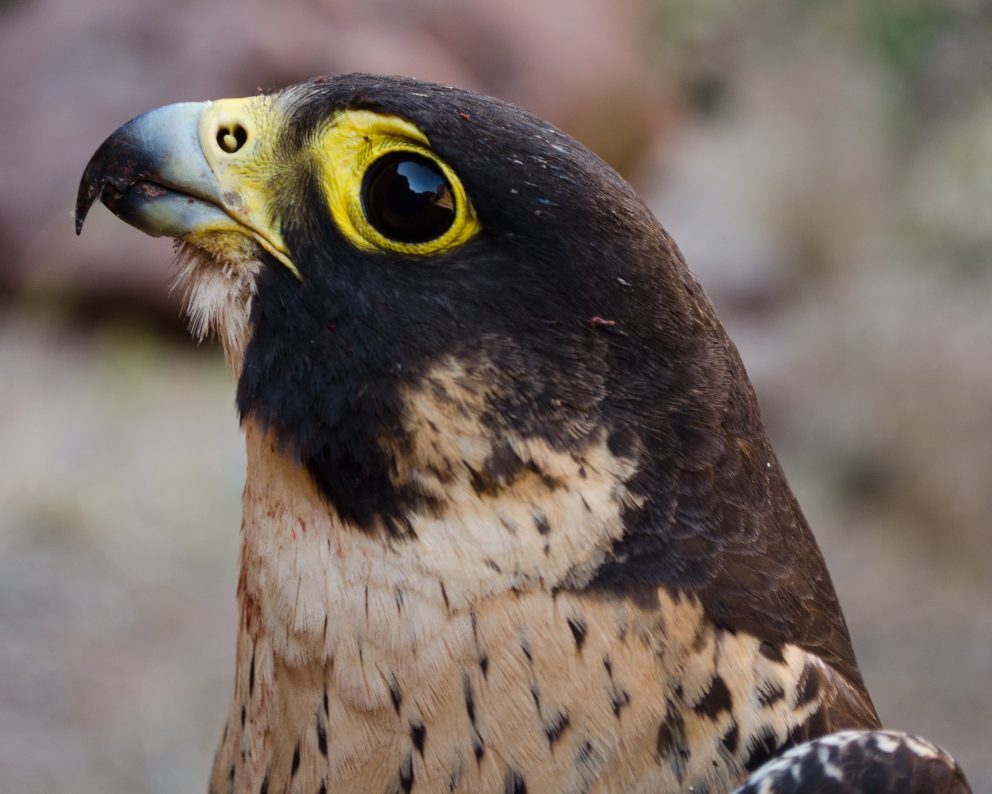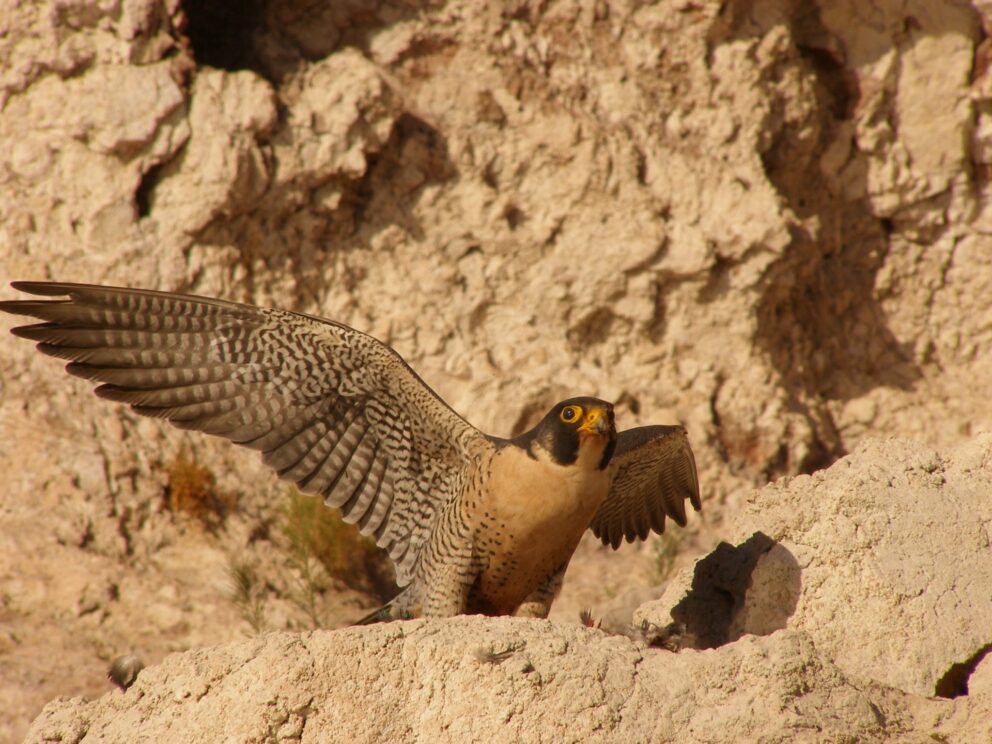- SCIENTIFIC NAME
- Falco peregrinus
- CLASSIFICATION
- Bird
- LIFE SPAN
- 13-20 Years
- SIZE
- 14-19” | 1-3.5lbs
- STATE CONSERVATION STATUS
-
- Priority Species
- FEDERAL CONSERVATION STATUS
- Least Concern
- GAME STATUS
- Non-Game
- GAME TYPE
- None
- Washoe
- Humboldt
- Pershing
- Churchill
- Mineral
- Lyon
- Douglas
- Carson City
- Storey
- Elko
- Lander
- Eureka
- White Pine
- Esmeralda
- Nye
- Lincoln
- Clark
Habitat & Range
Peregrine Falcons prefer open habitats but have adapted to human environments by perching and nesting on skyscrapers, water towers, and other tall structures. They prefer to nest on coastlines, lakesides, and mudflats where a source of water is nearby.
- Cliffs and Canyons
- Developed Landscapes
- Marsh
Threats
- Disease
- Habitat Degradation
- Habitat Loss
Natural History
Peregrine Falcons can be found all over the world. In Nevada, Peregrine Falcons migrate through the state, using open habitat to hunt along the way. On the western border of Nevada, Peregrine Falcons may be seen more commonly year round. As habitat transforms due to climate change, more Peregrine falcons may arrive in Nevada year-round. It is nearly impossible to outrun a predator like the Peregrine Falcon. Flying at speeds over 200 miles per hour, this falcon is a deadly hunter. They are considered to be the fastest animal on the planet. The diet of Peregrine Falcons is vast, consuming mostly other birds. Bird species they eat range from large ducks or shorebirds to small elusive swifts and hummingbirds. They can see prey from over two miles away, and are able to hunt by diving and striking prey out of the air. Peregrine Falcons are also known to steal food from other birds, making avian predators unsafe from the chaos of the Peregrine Falcon. Though fast, it may be killed by other larger birds such as eagles or owls, and sometimes even other Peregrine Falcons. They mate for life and are territorial during the breeding season. The nests are usually established over a cliff ledge, where the female lays an average of three or four eggs. In places without cliffs, they have been observed occupying nests abandoned by other large birds, such as ravens or Osprey.
Fun Facts














